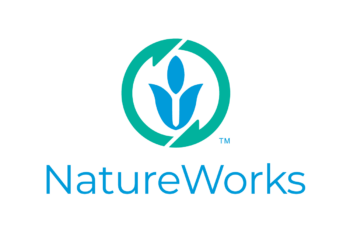
Natureworks Ingeo
Brand Information
Ingeo™ Biopolymer PLA
Polylactid Acid from Natureworks, under the brand name Ingeo™ biopolymer, is a biopolymer offering significant environmental benefits as it is made from renewable resources. It is produced by polymerisation of lactic acid, which is derived from the fermentation of plant-based sugars. Thus, Ingeo™ biopolymer PLA provides an eco-friendly option for various segments.
General Info:
Today, manufacturing Ingeo™ biopolymer produces 60% less greenhouse gases and uses 50% less non-renewable energy compared to traditional polymers like PET or polystyrene. This transparent polymer can be processed using various techniques such as sheet/film extrusion, thermoforming, injection moulding, or ISBM. Ingeo™ biopolymer PLA is produced in Blair, Nebraska, USA.
Ingeo™ Biopolymer PLA Offers:
- Excellent gloss, transparency, and clarity
- Exceptional flavour and aroma barrier properties
- Good oxygen barrier
- Easy to shape, print, and emboss
- Outstanding moisture management properties (ideal for apparel, textiles, and nonwovens)
- Hypoallergenic, outperforms PET for breathability and comfort, low odour retention (for nonwovens, textiles, and apparel)
- High rigidity, allowing for lighter packaging
- Low shrinkage
- EN 13432 European compostability norm
- Materials made from 100% renewable sources
Typical Applications:
- Bottles
- Gift cards
- Durable goods
- Films
- Paper coating
- Food packaging (such as cups and containers)
- Non-wovens
- Textiles
- Apparel
- Disposables
- Base material for various compounds
Portfolio:
Several Ingeo™ biopolymer PLA series are available for different processing needs:
- Ingeo™ biopolymer PLA 2000 series: extrusion/thermoforming
- Ingeo™ biopolymer PLA 3000 series: injection moulding
- Ingeo™ biopolymer PLA 4000 series: films and sheets
- Ingeo™ biopolymer PLA 6000 series: fibres and non-wovens
- Ingeo™ biopolymer PLA 7000 series: blow moulding (ISBM)
- Ingeo™ biopolymer PLA 8000 series: foam
Natureworks Ingeo Products
Available In
Turkey, Serbia, Sweden, Russia, Ukraine, Bulgaria, Greece, North Macedonia, Romania, Lithuania, Denmark, Slovenija, Bosnia and Herzegovina, Portugal, Switzerland, Germany, France, Croatia, Austria, Hungary, Spain, Czech Republic, United Kingdom, Poland, Italy, Ireland, Latvia, Netherlands, Norway, Slovakia, Belgium, Estonia, Finland, Aland Islands, Luxembourg


